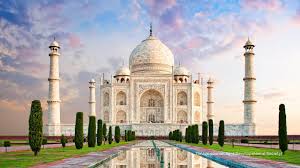17 October 2025 Indian Express Editorial
What to Read in Indian Express Editorial( Topic and Syllabus wise)
Editorial 1: Engagement without recognition
Context:
India’s relationship with Afghanistan has been one of deep historical, cultural, and strategic significance. However, since the Taliban’s return to power in August 2021, India’s engagement with the new regime has been cautious, and pragmatic.
Background:
- After the Taliban’s takeover, India shut down its embassy in Kabul, citing security concerns.
- Yet, India has important stakes in Afghanistan such as regional stability, counterterrorism, connectivity to Central Asia, and protection of its investments.
- Between 2001 and 2021, India had invested over USD 3 billion in Afghanistan, constructing major projects like the Zaranj–Delaram Highway, Salma (India–Afghanistan Friendship) Dam, and the Parliament buildingin Kabul.
India’s Current Approach:
- Although New Delhi has not officially recognized the Taliban regime, it has adopted a “practical engagement” approach to safeguard humanitarian and strategic interests.
- India has sent food grains, medicines, and COVID-19 vaccines through UN agencies and directly via Kabul.
- In June 2022, India reopened a technical mission in Kabul to coordinate humanitarian efforts, a clear indication of cautious re-engagement.
- Thousands of Afghan students continue to study in Indian universities under scholarships. India has also facilitated visa renewals and medical treatment for Afghans.
Strategic & Security Concerns:
- India’s biggest worry is that Afghanistan might again become a safe haven for terrorist groups like Lashkar-e-Taiba and Jaish-e-Mohammed, which threaten Indian security.
- The Taliban’s ties with Pakistan’s Inter-Services Intelligence (ISI) also complicate India’s position.
- Moreover, China’s growing involvement through aid, mining investments, and diplomatic engagementhas increased competition for influence in the region.
- India fears being left out of Afghanistan’s strategic space, especially after the withdrawal of U.S. forces.
International engagement:
- No major power, including the U.S., Russia, or China, has formally recognized the Taliban regime.
- The UN still treats Afghanistan’s previous (Republic) government as the official representative.
- India’s stance aligns with this global consensus while allowing limited functional engagement to address on-ground realities.
- India also uses platforms like the Shanghai Cooperation Organisation (SCO)and the Moscow Format to discuss Afghanistan-related issues, especially counterterrorism and drug trafficking.
Renewal of ties:
- India views engagement with the Taliban as a necessity rather than endorsement.
- Maintaining communication channels ensures security of Indian interests, humanitarian outreach, and monitoring of extremist activities.
- At the same time, New Delhi insists that recognition of the Taliban regime will depend on its behavior particularly its treatment of minorities, women’s rights, and commitment to an inclusive political framework.
Way Forward:
India’s policy toward Afghanistan has evolved into one of realpolitik balanced with moral caution. While avoiding formal recognition of the Taliban, India continues to engage to protect its people-to-people ties, regional security, and developmental achievements.
Editorial 2: Empower ASI to do its job and Heritage needs the PPP model
Context:
India’s heritage landscape, encompassing over 3,600 protected monuments and countless unlisted sites, faces the challenge of balancing preservation with public access and modern relevance. A recent debate, feature two contrasting perspectives which explore whether India’s heritage conservation should remain a government responsibility or be opened up to private participation through public–private partnerships (PPPs)
Strengthening the ASI’s Capacity and Vision:
- The Archaeological Survey of India (ASI)established in 1861 during British rule should remain the central institution for safeguarding heritage.
- Policymakers today are losingboth historical understanding and creative imagination in managing monuments.
- Once a beacon of scholarly excellence, the ASI has, over time, become bureaucratic and isolated, failing to keep pace with the changing urban and cultural landscape.
- Privatization risks reducing monuments to mere tourist commodities, stripping them of their historical and cultural essence.
- The problem lies not with the ASI’s existence but with its limited resources, weak outreach, and lack of professional autonomy.
Steps needed to strengthen ASI:
- Revitalizing the ASI through professional recruitment of archaeologists, conservation architects, and historians.
- Enhancing field-level engagement with local communities and scholars.
- Promoting public participation through heritage walks, school programs, and citizen initiatives.
- Digitizing archives and research outputs for greater transparency and educational access.
- Heritage must be preserved with continuity, sensitivity, and historical consciousness, values that market forces or commercial ventures may overlook.
- Past initiatives like the Delhi Urban Art Commission (DUAC)sought to balance conservation with urban growth.
Public–Private Partnerships (PPPs) in heritage conservation:
- With limited funding and manpower, the state alone cannot maintain thousands of monuments.
- Public–private partnerships (PPPs)are essential to preserve India’s vast and diverse heritage effectively
- Experience of restoring Mumbai’s Bhau Daji Lad Museum, Mehta highlights how collaboration between the Municipal Corporation of Greater Mumbai, INTACH,and private donors transformed a neglected space into an award-winning institution, recognized by UNESCO’s Asia-Pacific Heritage Award.
- This success demonstrates that well-regulated partnerships can achieve excellence while retaining authenticity.
- There are public concerns about commercialization but the PPPs, when transparent and inclusive, can strengthen rather than undermine heritage preservation.
Steps needed to strengthen PPP in heritage conservation:
- Forming heritage trusts involving local authorities, experts, and citizens.
- Promoting heritage-linked tourismand craft economies to benefit surrounding communities.
- Ensuring scientific restoration standards under ASI or UNESCO supervision.
- Building local capacity and citizen stewardship for long-term sustainability.
- Heritage management should not be seen as exclusionary.
- Instead, it must integrate education, conservation, and economic development, ensuring that preservation efforts also empower communities and generate livelihoods.
Way Forward:
Heritage conservation must balance state responsibility with participatory governance. Privatization should enhance, not erode, the authenticity and social value of monuments. A hybrid model, where the ASI provides oversight, while private and community actors bring innovation and resources, may offer the most sustainable path forward.
![]()


